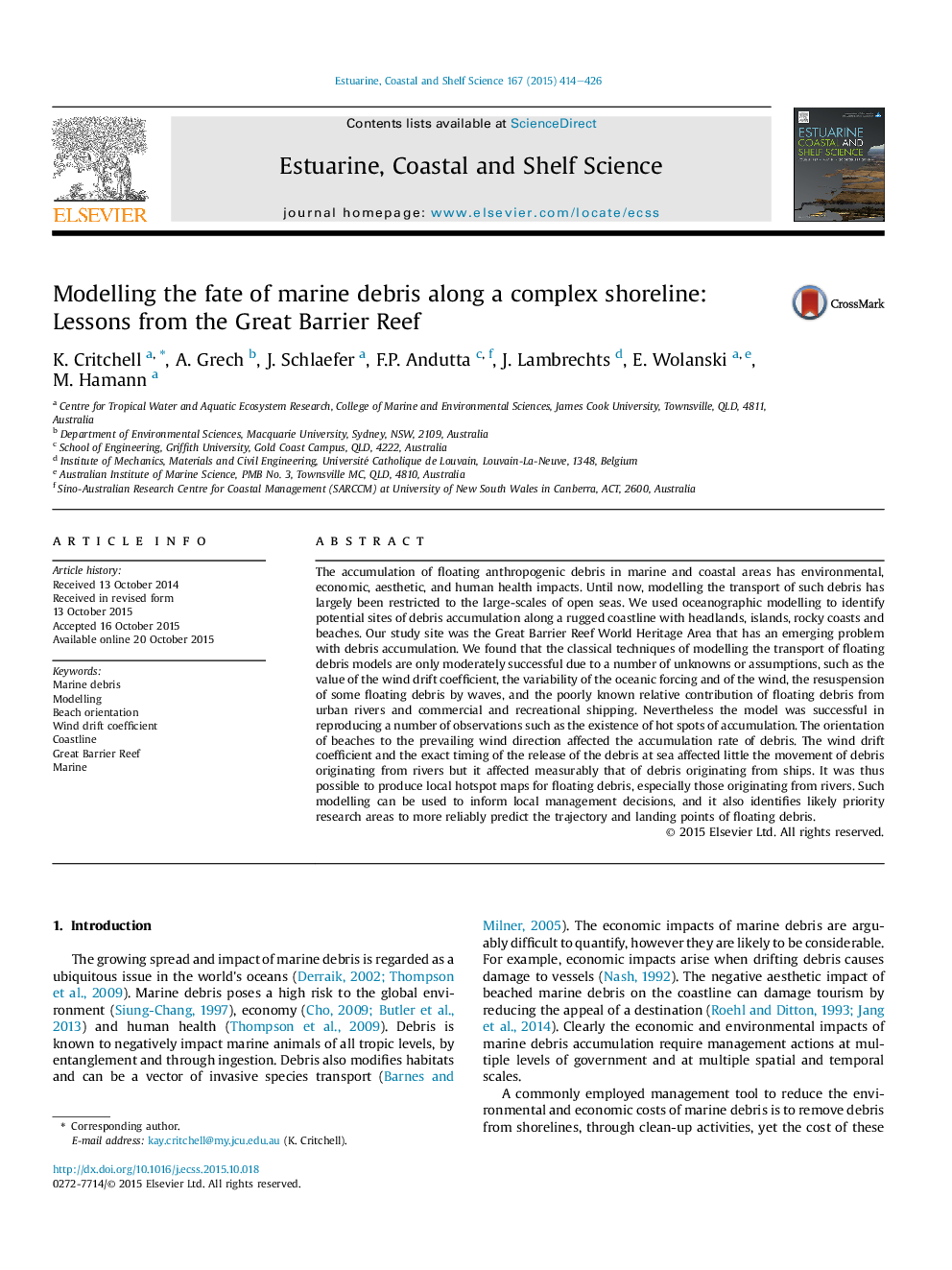| کد مقاله | کد نشریه | سال انتشار | مقاله انگلیسی | نسخه تمام متن |
|---|---|---|---|---|
| 4539341 | 1326591 | 2015 | 13 صفحه PDF | دانلود رایگان |
The accumulation of floating anthropogenic debris in marine and coastal areas has environmental, economic, aesthetic, and human health impacts. Until now, modelling the transport of such debris has largely been restricted to the large-scales of open seas. We used oceanographic modelling to identify potential sites of debris accumulation along a rugged coastline with headlands, islands, rocky coasts and beaches. Our study site was the Great Barrier Reef World Heritage Area that has an emerging problem with debris accumulation. We found that the classical techniques of modelling the transport of floating debris models are only moderately successful due to a number of unknowns or assumptions, such as the value of the wind drift coefficient, the variability of the oceanic forcing and of the wind, the resuspension of some floating debris by waves, and the poorly known relative contribution of floating debris from urban rivers and commercial and recreational shipping. Nevertheless the model was successful in reproducing a number of observations such as the existence of hot spots of accumulation. The orientation of beaches to the prevailing wind direction affected the accumulation rate of debris. The wind drift coefficient and the exact timing of the release of the debris at sea affected little the movement of debris originating from rivers but it affected measurably that of debris originating from ships. It was thus possible to produce local hotspot maps for floating debris, especially those originating from rivers. Such modelling can be used to inform local management decisions, and it also identifies likely priority research areas to more reliably predict the trajectory and landing points of floating debris.
Journal: Estuarine, Coastal and Shelf Science - Volume 167, Part B, 20 December 2015, Pages 414–426
